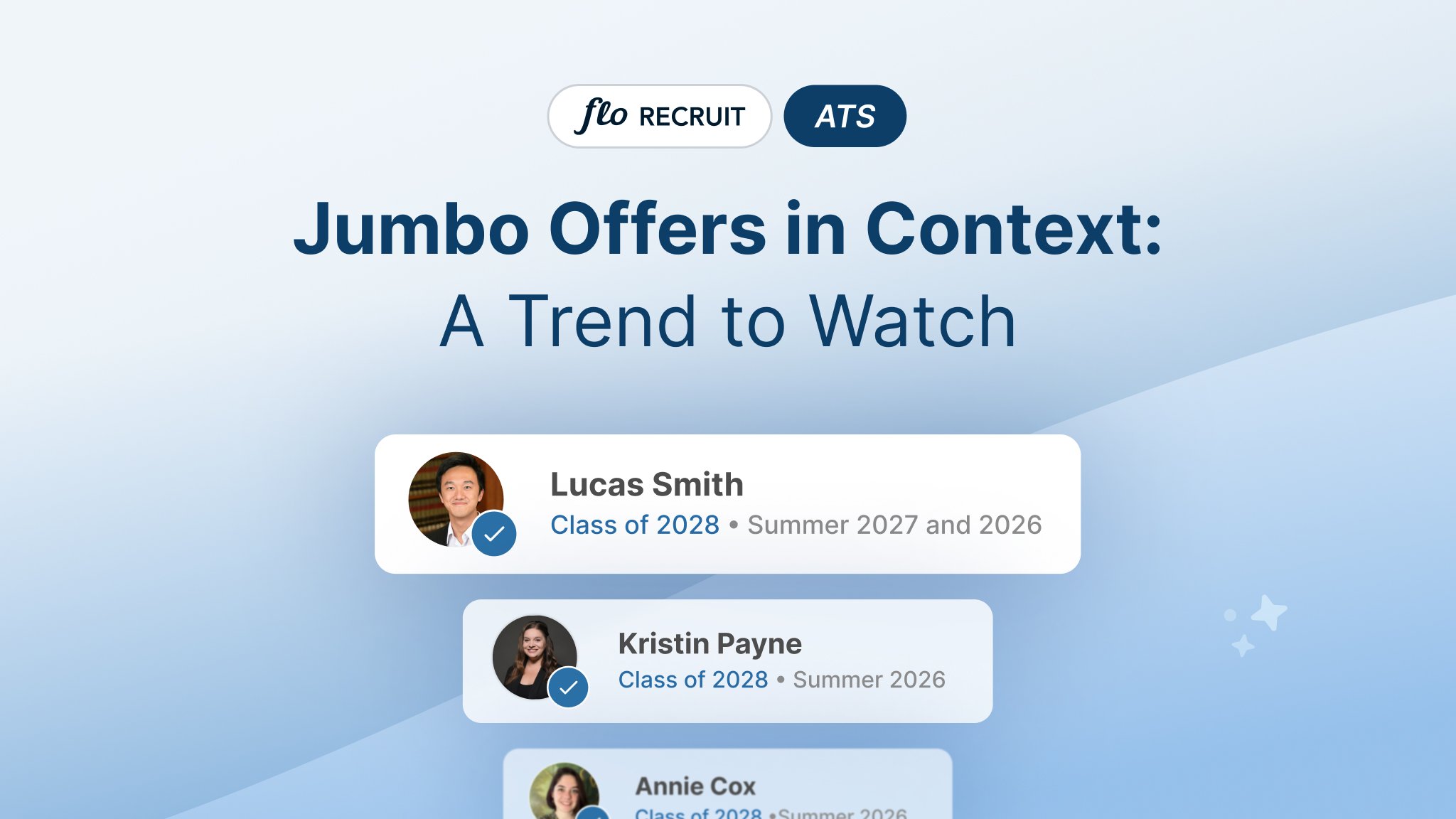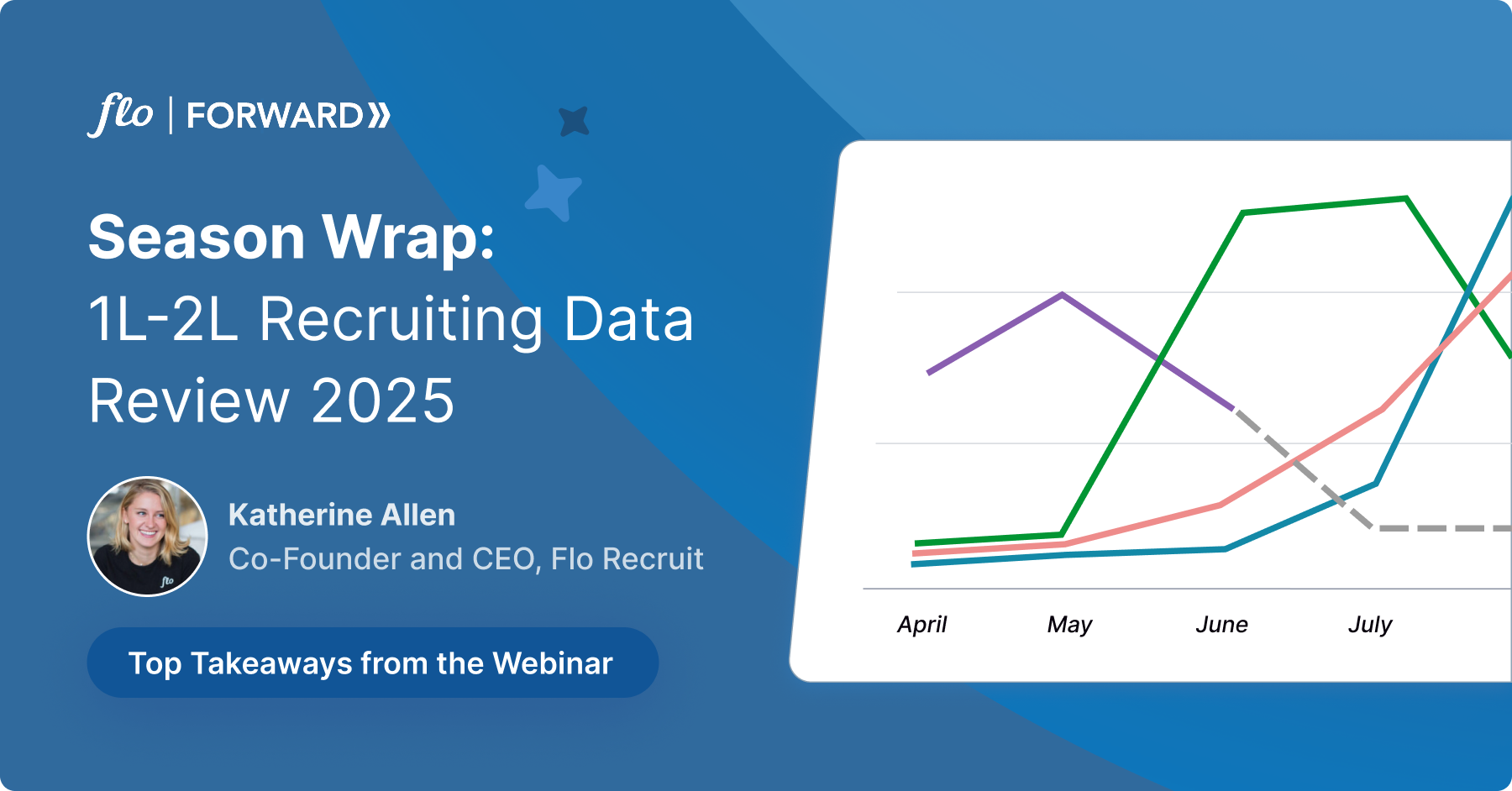What the Earlier 1L & 2L Recruiting Timeline Means for Smaller Markets and Law Firms
The legal recruiting world continues to shift, and for the 2025–2026 season, we’re seeing the earliest 1L recruiting timeline from BigLaw yet. Open application dates for 1L positions are now creeping back into October (with many firms targeting November), and 2L timelines are expected to move into early spring.
But what does this mean for firms outside the largest cities and outside the BigLaw bubble? And what opportunities might it create for mid-size, regional, and boutique firms?
The Trend Toward Earlier Timelines
If you’ve been watching the legal recruiting market for the past few years, this won’t come as a surprise: the law student networking, application, and interview timelines have been moving up steadily since 2022. But the 2025–2026 recruiting season appears to be the earliest yet, with firms opening 1L applications as early as October and the majority launching their opportunities in November, with some moving into January 2026.
This acceleration is driven largely by competition among BigLaw firms in major markets, each trying to get in front of top talent sooner and lock in strong candidates before competitors do. For many students, this means thinking about summer positions, and even future post-graduate roles, in their first semester of law school – far earlier than ever before.
Not Every Market is Moving at the Same Speed
While major-market BigLaw firms may continue to move earlier, that doesn’t necessarily mean the same pressure applies in smaller markets or to firms with more specialized hiring needs.
In fact, many mid-size, regional, and boutique firms have not shifted their recruiting cycles to match BigLaw’s fast pace. And that’s not necessarily a bad thing. By staying out of the “race to the earliest date,” these firms can attract excellent candidates who:
-
Weren’t ready to apply in the fall. Many students use their first semester to adjust to law school, explore practice areas, and think about where they want to work.
-
Aren’t focused on BigLaw. Students interested in smaller firms, regional markets, or niche practice areas may prefer a later, less rushed process where they can make a more informed decision.
This can give smaller firms a unique window to build relationships and connect with candidates after the initial BigLaw push has passed.
2L Recruiting is Shifting, Too
While many firms have not yet announced their 2L application dates, early signs point to open dates landing in early spring. For BigLaw firms, this will likely mean an even more compressed process. From application to callback to offer, firms continue to compete for the same top group of students.
Once again, smaller firms that aren’t targeting that same candidate pool may benefit from staying out of the rush. Rather than compete head-to-head with national firms, they can wait until students are out of the frenzy of on-campus interviewing and the first open application dates and are better able to evaluate their options.
Opportunities for Smaller Firms
These timeline shifts present challenges, but also opportunities, for firms outside the largest markets:
-
Access to exceptional candidates. Students who either miss BigLaw’s early deadlines or decide it’s not the right path may be more engaged and receptive later in the cycle.
-
Time to tell your story. A later recruiting cycle means firms can invest in outreach, networking events, and one-on-one relationship building to highlight what makes them unique.
-
A more measured candidate experience. Students who feel overwhelmed by early recruiting may appreciate a slower process with more personal communication and thoughtful interviews.

Will the Market Stabilize?
There’s a limit to how early application dates can realistically move. Most students are not ready to commit to summer positions in September of their first year when they have barely started classes and have no grades, and firms may find that hiring too early increases the risk of mismatched placements.
Over time, we expect to see the market stabilize into clearer patterns:
-
BigLaw and major markets will likely set earlier, standardized timelines that allow firms to compete on an even playing field without creeping earlier each year.
-
Mid-size, boutique, and regional firms may continue to recruit later, creating a natural second wave of opportunities for students.
The coming recruiting seasons will also generate more data. Firms will be able to analyze whether earlier hiring has any impact on summer program outcomes, associate retention, or long-term attorney success. Those insights may ultimately guide the market toward more sustainable timelines.
Conclusion
The 2025–2026 season marks the earliest 1L recruiting timeline to date, with firms opening applications Oct 1 in some cases, but that doesn’t mean every firm needs to sprint forward. For mid-size, boutique, and regional firms, this shift may actually open doors to students who aren’t ready or willing to apply to BigLaw in the fall.
As the market stabilizes, we’ll see more defined timelines for different types of employers. In the meantime, firms outside the largest markets should view the changes not as a challenge, but as an opportunity to reach great candidates on their own terms.



